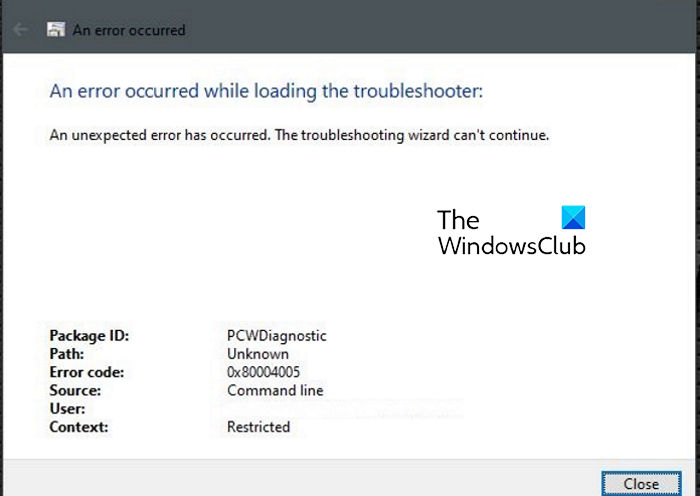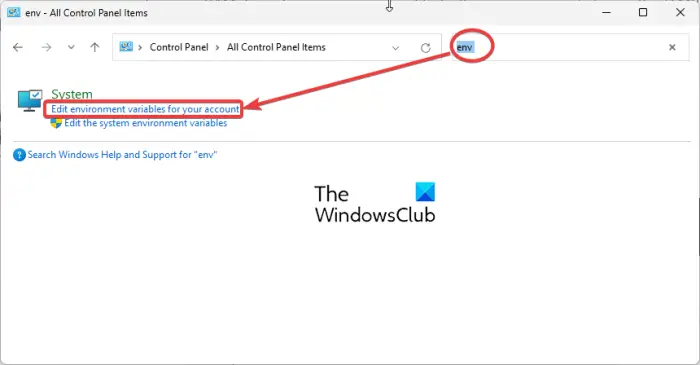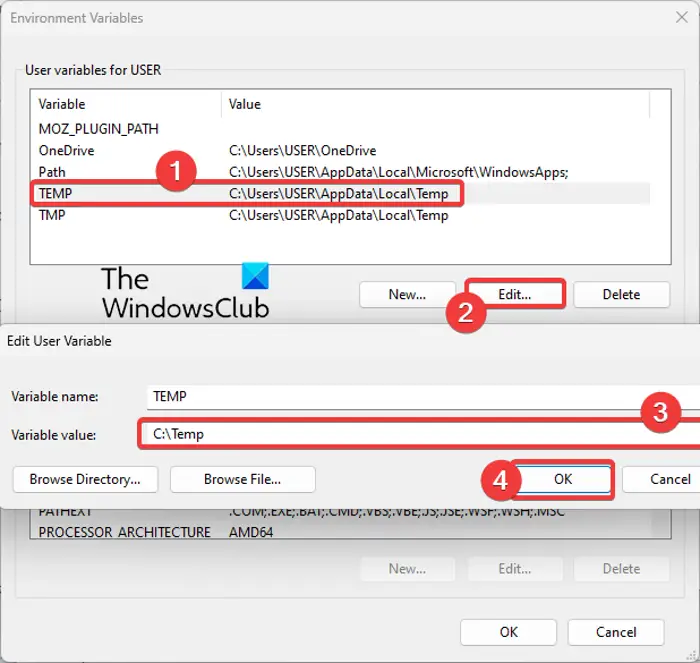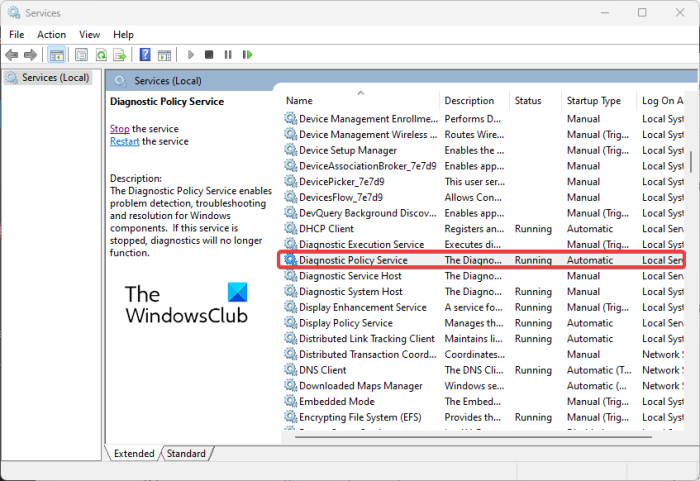Several Windows users have reported being unable to run the Program Compatibility Troubleshooter on their PC. You can run the compatibility troubleshooter by going to Settings > Troubleshoot > Other troubleshooter; or you can launch the troubleshooter if you are experiencing issues with a specific program. Right-click on the program, select Properties, go to the Compatibility tab and press the Run compatibility troubleshooter button.
However, a lot of users are unable to use the compatibility troubleshooter because it is not working properly. Also, some of them keep getting the following error message:
An error occurred while loading the troubleshooter:
An unexpected error has occurred. The troubleshooting wizard can’t continue.

The above error message is accompanied by different error codes. If you are experiencing the same problem, follow this guide and fix the issue at hand.
Program Compatibility Troubleshooter not working in Windows 11/10
Here are the solutions you can use if Program Compatibility Troubleshooter is not working on your Windows 11/10 PC:
- Change the TEMP directory.
- Perform SFC and DISM scans.
- Turn off third-party antivirus software/firewall.
- Restart Diagnostic Policy Service.
- Run Program Compatibility Troubleshooter in Safe Mode.
- Reset Windows 11/10.
1] Change the TEMP directory
You can try changing the environmental variables to fix the Compatability troubleshooter not working issue. As per several affected users, changing the default TEMP directory to C:\TEMP helped them resolve this problem. This fix is mentioned on the official Microsoft Support page. So, you can also try doing the same and see if the issue is fixed or not.
Here’s how:
First, open the Control Panel using the Windows Search function. In the Control Panel window, type “environment” in the search box.

You will see an option called Edit environment variables for your account; simply click on it.

In the opened Environment variables window, select the TEMP field under the User variables section. After that, press the Edit button and a new dialog window will open up. Here, click on the Variable value field and change its value to the following address and press the OK button: C:\Temp
Once done, go back to the Environment variables window and select the TMP user variable. After that, press the Edit button and change its Variable value to C:\Temp. Finally, press the OK button and close the window.
You can now try running Program Compatibility Troubleshooter and check if it is working fine now.
If this method doesn’t help you fix the problem at hand, you can move on to the next potential solution to fix this issue.
2] Perform SFC and DISM scans
If your system files are corrupted or missing, you might face this issue. Hence, you can try fixing the damaged system files by running an SFC scan on your computer. SFC (System File Checker) is a command-line utility tool that enables you to restore or replace infected and missing system files. Follow the below steps to run an SFC scan:
- Firstly, run Command Prompt as an administrator from the Start menu search.
- Now, type the below command and press the Enter button:
sfc /scannow
- Windows will now start scanning for damaged system files and repairing them.
- When done, reboot your computer and see if the Compatibility troubleshooter is working properly now.
If an SFC scan doesn’t help, you can perform a Deployment Imaging and Servicing Management (DISM) scan. It is another Windows command-line tool that is used to repair Windows System Image and Windows Component Store. It fixes system corruption and restores the good health of your PC. Here’s how to perform a DISM scan:
- First, open Command Prompt with administrator privilege.
- Now, enter the below commands one by one:
Dism /Online /Cleanup-Image /CheckHealth Dism /Online /Cleanup-Image /RestoreHealth
- Once the commands are executed successfully, restart your computer and run Program Compatibility Troubleshooter to check if it works or not.
3] Turn off third-party antivirus software/firewall
This issue might be caused due to your overprotective third-party security suite including antivirus and firewall. Third-party antivirus and firewall software can cause interrupts in the regular working of Program Compatibility Troubleshooter. Thus, it won’t work as intended. Now, if this scenario is applicable, you can disable your antivirus and firewall, and then check if the problem is resolved or not.
4] Restart Diagnostic Policy Service

The next thing you can do to fix the problem at hand is to make sure Diagnostic Policy Service is running on your PC. This service enables troubleshooting for Windows components. It is enabled by default. But, it might have been disabled by mistake or due to a virus infection. Or, the service might be stuck in a limbo state which is why it is not working effectively. So, restart or enable Diagnostic Policy Service and see if the problem is fixed or not.
Here are the steps to do that:
- First, evoke the Run command box by pressing the Win+R hotkey and then enter “services.msc” in its Open field. It will launch the Services window.
- After that, scroll down and locate the Diagnostic Policy Service.
- In case this service is already running, press the Restart option to restart the service. Otherwise, if the service is not running currently, press the Start option to enable it.
- Next, check if the service is configured to run on startup. If not, right-click on the service and choose the Properties option from the context menu.
- Now, select Automatic as the Startup type and click on the Apply > OK button.
- See if the Program Compatibility Troubleshooter is working properly now or not.
5] Run Program Compatibility Troubleshooter in Safe Mode
The next thing you can do is run Program Compatibility Troubleshooter in Safe mode. In Safe mode, the PC starts in a basic state with a limited set of files and drivers. This might help you fix the problem at hand. Here’s how you can do that:
- Firstly, open your Settings app and go to the System > Recovery option.
- Now, click on the Restart now button present next to the Advanced startup option.
- Next, once your PC restarts, choose the Troubleshoot > Advanced options > Startup Settings > Restart option.
- After that, from the list of options, select the 4th option (press F4) to enable safe mode.
- Once your PC is rebooted, try running the Program Compatibility Troubleshooter and see if it is working fine or not.
6] Reset Windows 11/10
The last resort to fix this issue is resetting your Windows PC. You might be dealing with system corruption that can’t be fixed by SFC or DISM scan. Hence, in that case, restoring the original state of your PC might help you fix the problem at hand. So, reset your Windows 11 PC and while doing so, you can keep your files. You can use the below steps to do that:
- First, launch Settings, move to the System tab, and press the Recovery option.
- Now, click on the Reset PC option and then select the Keep my files option on the next prompt. Doing so will make sure that all your personal data is intact. Else, you can also select the Remove everything option to delete everything.
- Once the resetting process is complete and the system is restarted, try opening Program Compatibility Troubleshooter.
This post offers additional generic suggestions on what you can do if your Windows Troubleshooter is not working, does not start, is stuck or closes before completing its job
What do I do if Windows Update Troubleshooter is not working?
If your Windows Update troubleshooter is not working, you can try restarting your PC and then make sure you are connected to an active internet connection. This issue could be caused due to corrupted system files, so run an SFC scan to fix it.
TIP: See this post if you receive An unexpected error has occurred, The troubleshooting wizard can’t continue message with error codes 0x803c010a, 0x80070005, 0x80070490, 0x8000ffff, etc.
How do I reset my Compatibility settings?
To reset compatibility settings for a program, right-click on its main executable and select the Properties option from the context menu. Afterward, go to the Compatibility tab and uncheck the Run this program in compatibility mode for option.